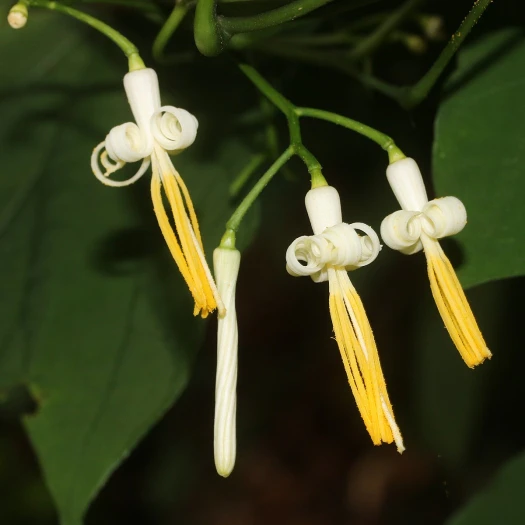Lobed Leaf Alangium
(Alangium platanifolium)
Lobed Leaf Alangium (Alangium platanifolium)
/
/

Alpsdake
CC BY-SA 4.0
Image By:
Alpsdake
Recorded By:
Copyright:
CC BY-SA 4.0
Copyright Notice:
Photo by: Alpsdake | License Type: CC BY-SA 4.0 | License URL: https://creativecommons.org/licenses/by/3.0 | Uploader: Alpsdake | Publisher: Wikimedia Commons |





























Estimated Native Range
Climate Requirements for Dearborn Heights, Michigan
| This Plant | Your Site | Plant Suitability for Your Location | ||
|---|---|---|---|---|
| • Precipitation | 20" - 124" | 33" | Your precipitation may be insufficient for this plant. Irrigate N" / year. | Irrigate N" / year |
| • High Temp. | 68°F - 93°F | 84°F | Your summer temperatures are normal for this plant. | Excellent |
| • Low Temp. | -9°F - 51°F | 17°F | Your winter temperatures are normal for this plant | Excellent |
This plant should grow well at your location with about N inches per year (Y minutes per month) of irrigation.
Summary
Alangium platanifolium, commonly known as Lobed Leaf Alangium, is a deciduous shrub native to temperate forests and forest edges in East Asia, including China, Japan, and Korea. It typically grows to a height and width of 12-15 feet (4-5 meters), with a rounded form and spreading branches. The leaves are broad and resemble those of a maple, hence the species name ’platanifolium’ which means ’maple-leaved’. During the summer months, it produces small, inconspicuous yellow and white flowers that may not be particularly showy but are valued for their subtle beauty. The bark is gray and can become attractively furrowed with age.
Lobed Leaf Alangium is appreciated for its unique foliage and adaptability to different garden settings. It can be used as a specimen plant, in shrub borders, or as part of a woodland garden. This shrub is relatively low-maintenance, tolerating a range of soil types, though it prefers well-drained soils. It is also moderately drought-tolerant once established. While it thrives in full sun to part shade, it is adaptable to various light conditions. There are no widely recognized cultivars of this species in the horticultural trade, and it is generally grown from seed. Potential problems include susceptibility to leaf spot diseases and occasional insect pests, but these are not typically severe. It is not known to be invasive when grown outside its native range, but as with all non-native plantings, care should be taken to monitor its growth and spread.CC BY-SA 4.0
Lobed Leaf Alangium is appreciated for its unique foliage and adaptability to different garden settings. It can be used as a specimen plant, in shrub borders, or as part of a woodland garden. This shrub is relatively low-maintenance, tolerating a range of soil types, though it prefers well-drained soils. It is also moderately drought-tolerant once established. While it thrives in full sun to part shade, it is adaptable to various light conditions. There are no widely recognized cultivars of this species in the horticultural trade, and it is generally grown from seed. Potential problems include susceptibility to leaf spot diseases and occasional insect pests, but these are not typically severe. It is not known to be invasive when grown outside its native range, but as with all non-native plantings, care should be taken to monitor its growth and spread.CC BY-SA 4.0
Plant Description
- Plant Type: Shrub
- Height: 12-15 feet
- Width: 12-15 feet
- Growth Rate: Moderate
- Flower Color: Yellow, White
- Flowering Season: Summer
- Leaf Retention: Deciduous
Growth Requirements
- Sun: Full Sun, Part Shade
- Water: Medium
- Drainage: Slow, Medium, Fast
Common Uses
Edible*Disclaimer: Easyscape's listed plant edibility is for informational use. Always verify the safety and proper identification of any plant before consumption., Fragrant, Low Maintenance
Natural Habitat
Temperate forests and forest edges in East Asia
Other Names
Common Names: Alangium, 박쥐나무
Scientific Names: Alangium platanifolium, Alangium platanifolium var. trilobum, Alangium platanifolium f. velutinum, Alangium platanifolium f. macrophyllum, Alangium platanifolium var. macrophyllum, Marlea platanifolia, Marlea macrophylla, Alangium macrophyllum, Marlea macrophylla var. triloba
GBIF Accepted Name: Alangium platanifolium (Siebold & Zucc.) Harms